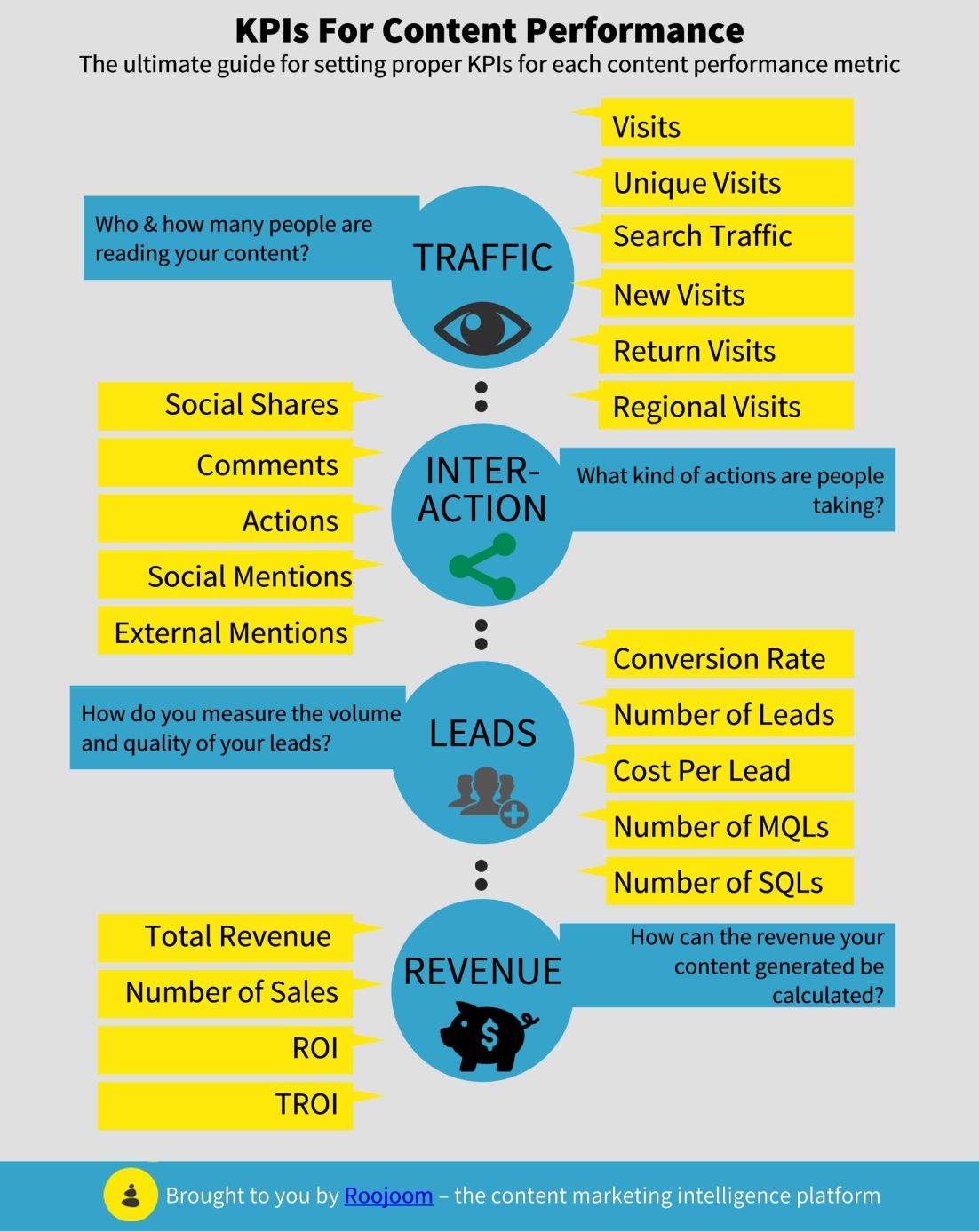Content marketing has grown to be one of marketers’ main go-to strategies for driving brand awareness and leads. Yet, most of us are struggling with measuring the performance of that content.
According to recent research by Marketingprofs and The Content Marketing Institute 72% of marketers are battling the challenge of measuring content marketing performance.
When evaluating content performance, it’s crucial to understand which metrics to measure and what the key performance indicator (KPI) is for each of these metrics. But what sets metrics apart from KPIs? How do you find the right metrics to monitor? And how do you match KPIs with their corresponding metrics? This can get confusing.
Make sure everyone in your team is on the same page:
To make sure everyone in your team is on the same page, you need to first choose which metrics you want to track and then set proper KPIs for each. KPIs are necessary for translating data to insight into your content’s degree of success. In other words, if your team relies on the performance of each metric, there will be just a pile of data, which can’t possibly frame an analytical lens into your content.
KPIs create benchmarks that segment the important measures of your content, so that the analytical focus can be narrow and comprehensive. Take, for example, a handful of metrics for any given piece of content: clicks, traffic volume, pageviews, social shares, likes, leads generated, conversions, comments. If your brand’s KPIs don’t zero in on only a few of the whole lot, there will be no frame of reference and thus, no insight into content performance. However, if your team singles out the highest-ranking metrics from their most standout pieces of content, they can set a clearly-defined standard for their subsequent posts based on those results. In short, once they scale past accomplishments, they’ll be better directed for what to scale in the future.
Which KPIs belong to which metrics?
Luckily, there’s a method to this madness. It’s important to determine KPIs according to each standard you’re setting for your team’s content (as opposed to each piece of content). In terms of quantifying content performance standards, it’s best to stick to 2-3 metrics out of the following: traffic volume, interaction, lead generation, and revenue. By analyzing these verticals via their monetary results as opposed to their vanity results, you’ll be able to size up your content. This Infographic provides s a rundown of the most important aspects to evaluate when determining your brand’s metrics and KPIs and leading your team accordingly:
Learn how to increase your content performance with Roojoom
Which metrics and KPIs are you using to measure your content performance? Please share in the comments below.
